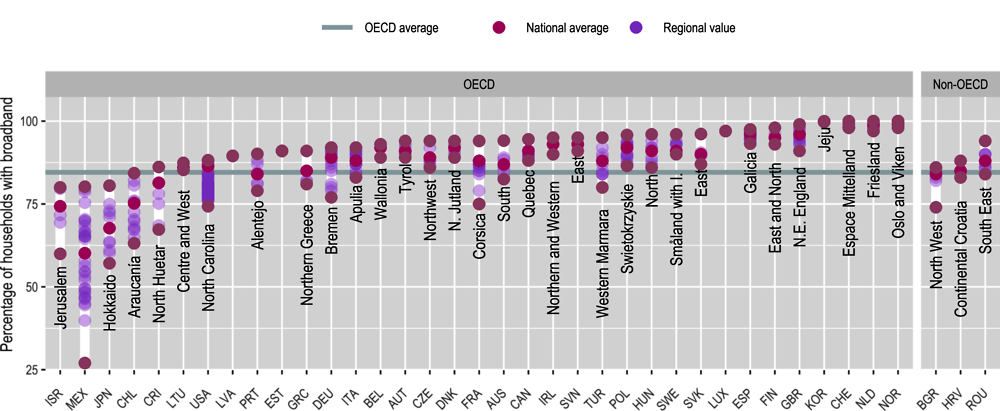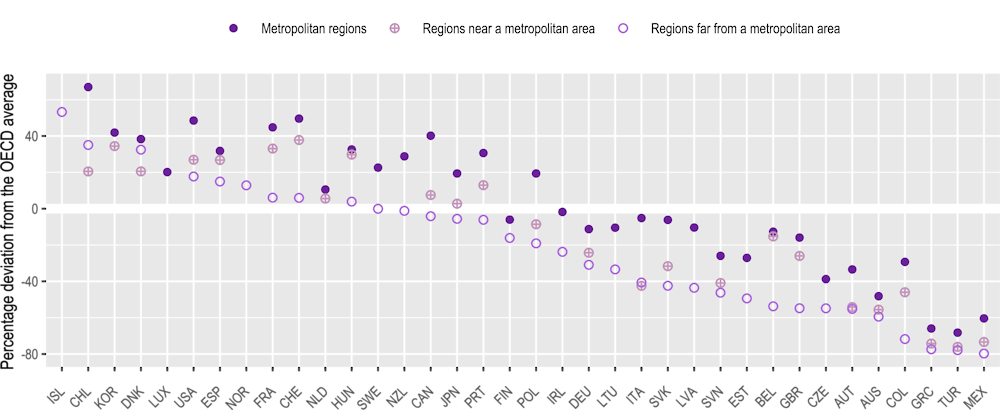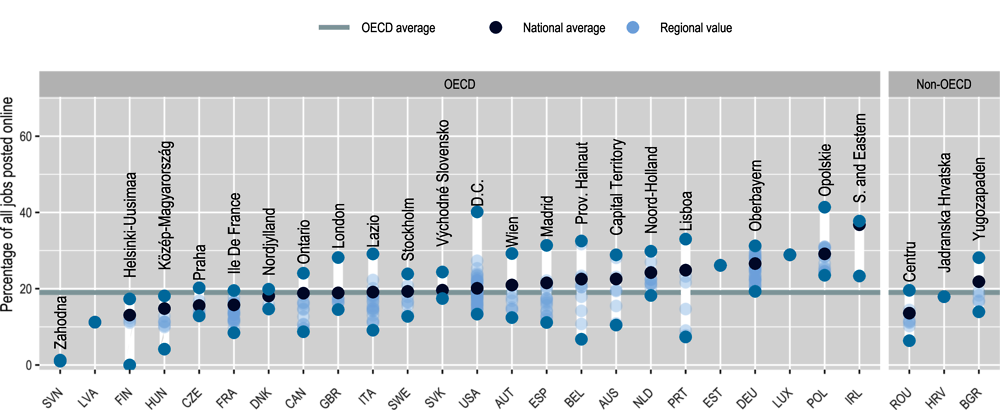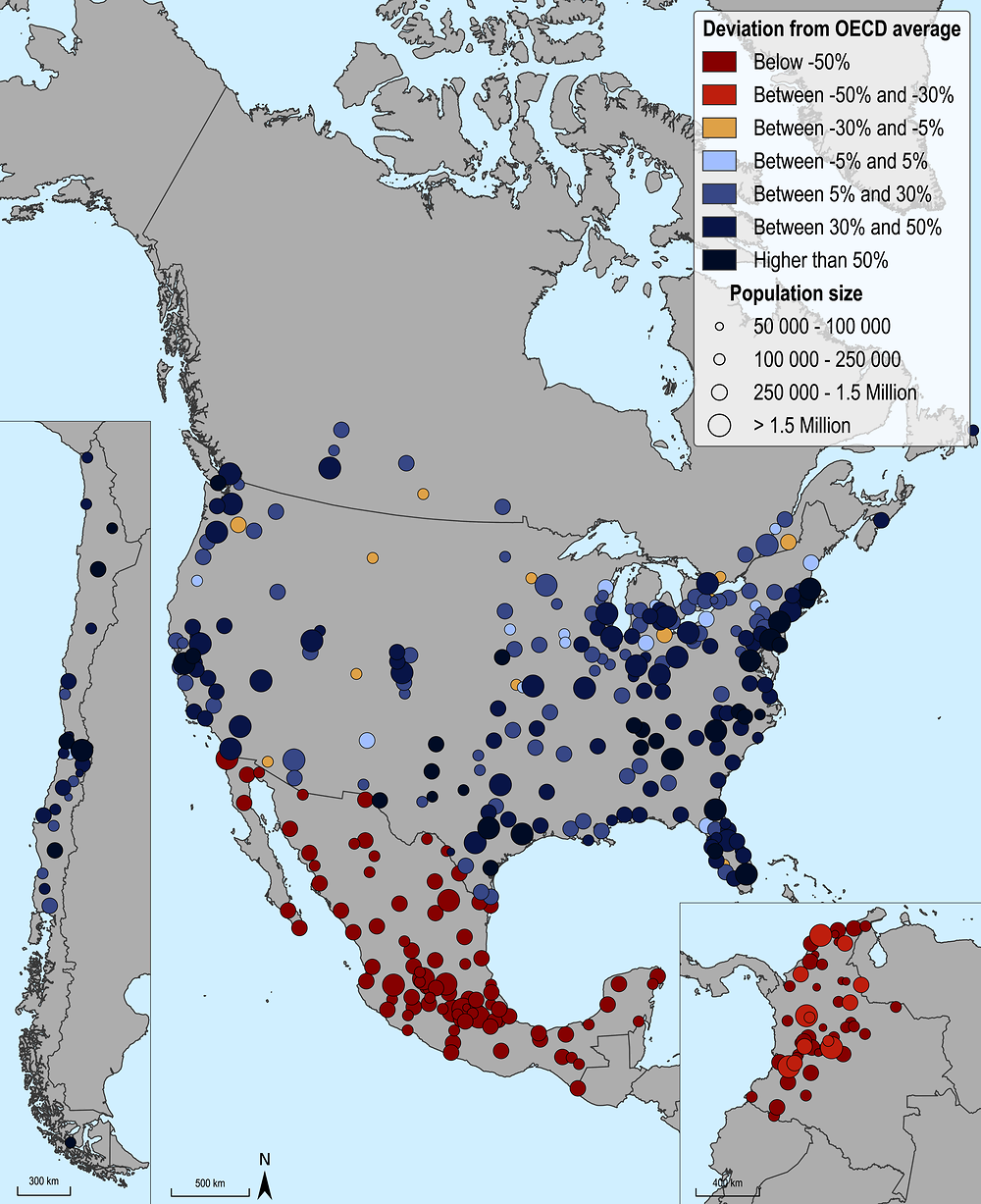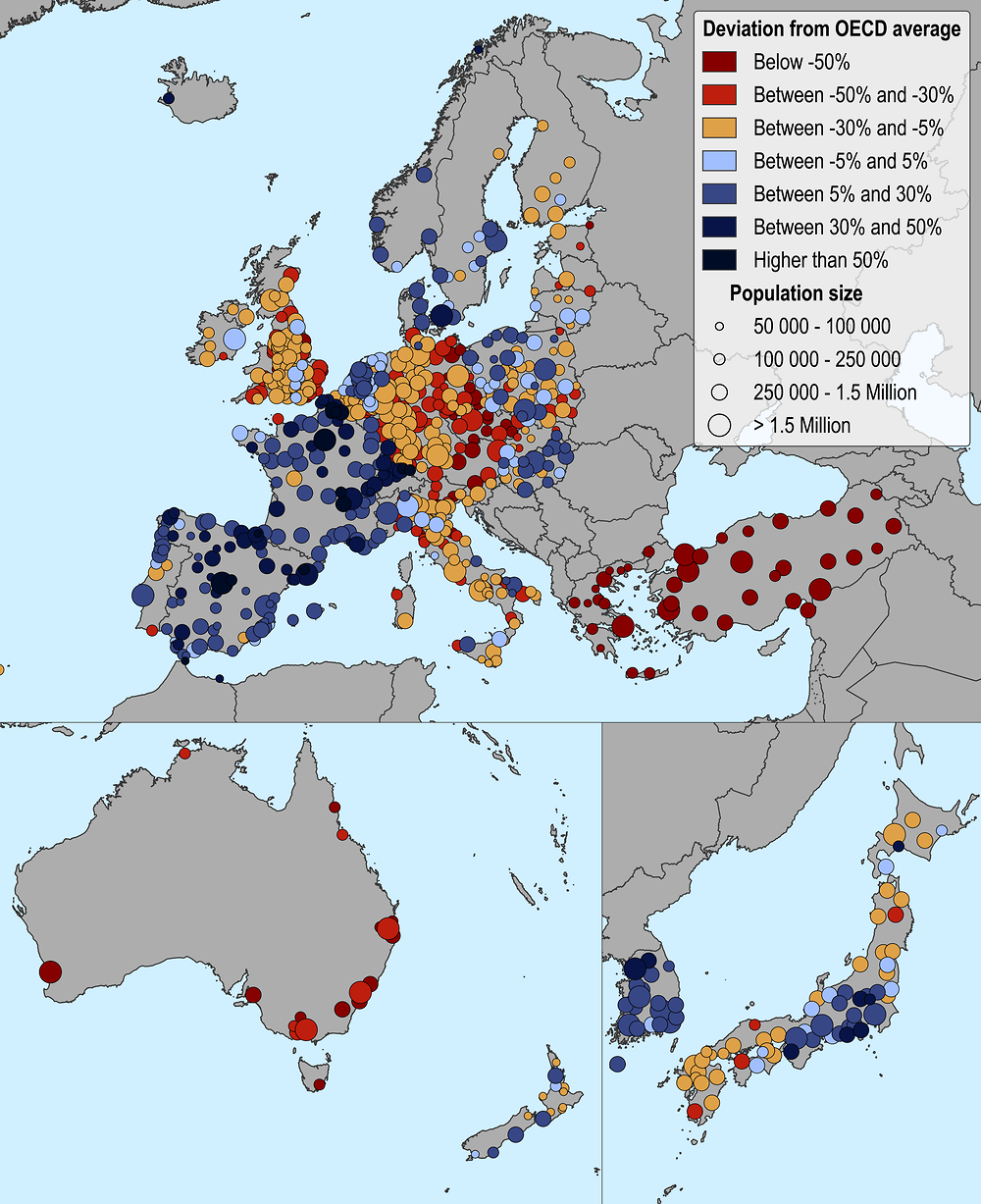Although the digital gap has been narrowing since the COVID-19 outbreak, people in metropolitan regions experience 40% faster Internet than those in regions far from metropolitan areas.
Internet access and quality are becoming increasingly important in people’s lives as many jobs, learning opportunities and public services transition or emerge in the digital world. The demand for communications infrastructure, already growing strong pre-pandemic, accelerated with the mobility restrictions and social distancing measures imposed in the wake of COVID-19. In December 2020, the OECD area saw a record increase of 21 million new high-speed broadband subscriptions. Similarly, businesses have increased demand for communications networks to support new digital applications and businesses (OECD, 2022). While the increased demand for digital infrastructure is contributing to closing some of the regional digital divides, regions and cities are still unequally equipped to make the most of digitalisation.
On average across OECD regions, 85% of households benefitted from access to broadband Internet in 2021. Nevertheless, in countries with overall low levels of broadband access, regional gaps were stark. While the average gap in access to broadband Internet between the better-off and worse-off regions in the same country was around 10 pp, in countries such as Chile, Israel, Japan and Mexico, regional gaps were above 20 pp (Figure 4.13). In those countries, some regions with one‑third of the population or more lacking access to basic Internet are driving the digital gap.
Beyond access to basic digital infrastructure, high-speed Internet is also crucial to leveraging social and economic opportunities of digitalisation such as teleworking and new business processes and models. In the first quarter of 2022, people living in metropolitan areas experienced, on average, 40% faster fixed Internet connections than those in regions far from metropolitan areas. Differences by type of region were the highest in Canada and Switzerland (above 40 pp) – although, in the regions of those countries, Internet speed was similar to or higher than the OECD average. Conversely, regions in Greece, Mexico and Türkiye, with relatively small gaps across types of regions, experienced speeds between 60% and 80% slower than the OECD average (Figure 4.14). Overall, a metropolitan vs. non-metropolitan digital divide is present in all OECD countries. However, the quality of connection in non‑metropolitan regions (both regions near metropolitan areas and regions far from metropolitan areas) has been improving over the past 3 years as average speeds increased by around 110% in those regions, approximately 18 pp above the rate of metropolitan regions.
In 2021 Q1, Internet speed was also very unequal across cities (FUAs of 50 000 people or more) of OECD countries. Cities with Internet speed 50% above the OECD average are concentrated in Canada, Chile, France, Spain and the US, while many cities with underperforming Internet (50% below the OECD average) are located in Australia, Colombia, Germany, Greece, Mexico and Türkiye. Inequalities across cities can be stark also within the same country. In Chile, France, Italy, New Zealand and the US, the digital gap between the better-off and worse-off city was at least 80 pp (Figures 4.16-4.17).
Digitalisation also affects the labour market, where digital skills are becoming a prerequisite for many jobs. Employers’ demands for general and advanced information and communication technology (ICT) skills are high in most OECD countries. In three-quarters of OECD regions, more than 15% of posted job vacancies require advanced ICT proficiency (e.g. programming and related skills) and a further 15% require general ICT proficiency (e.g. word processing, spreadsheet and Internet skills). Belgium, Portugal and the US have some regions with the highest demand for advanced ICT skills but also some regions with very low demand for advanced ICT skills, leading to large within-country differences. In the majority of OECD countries with multiple regions (16 out of 24), capital regions have the highest demand for advanced ICT skills (Figure 4.15).

